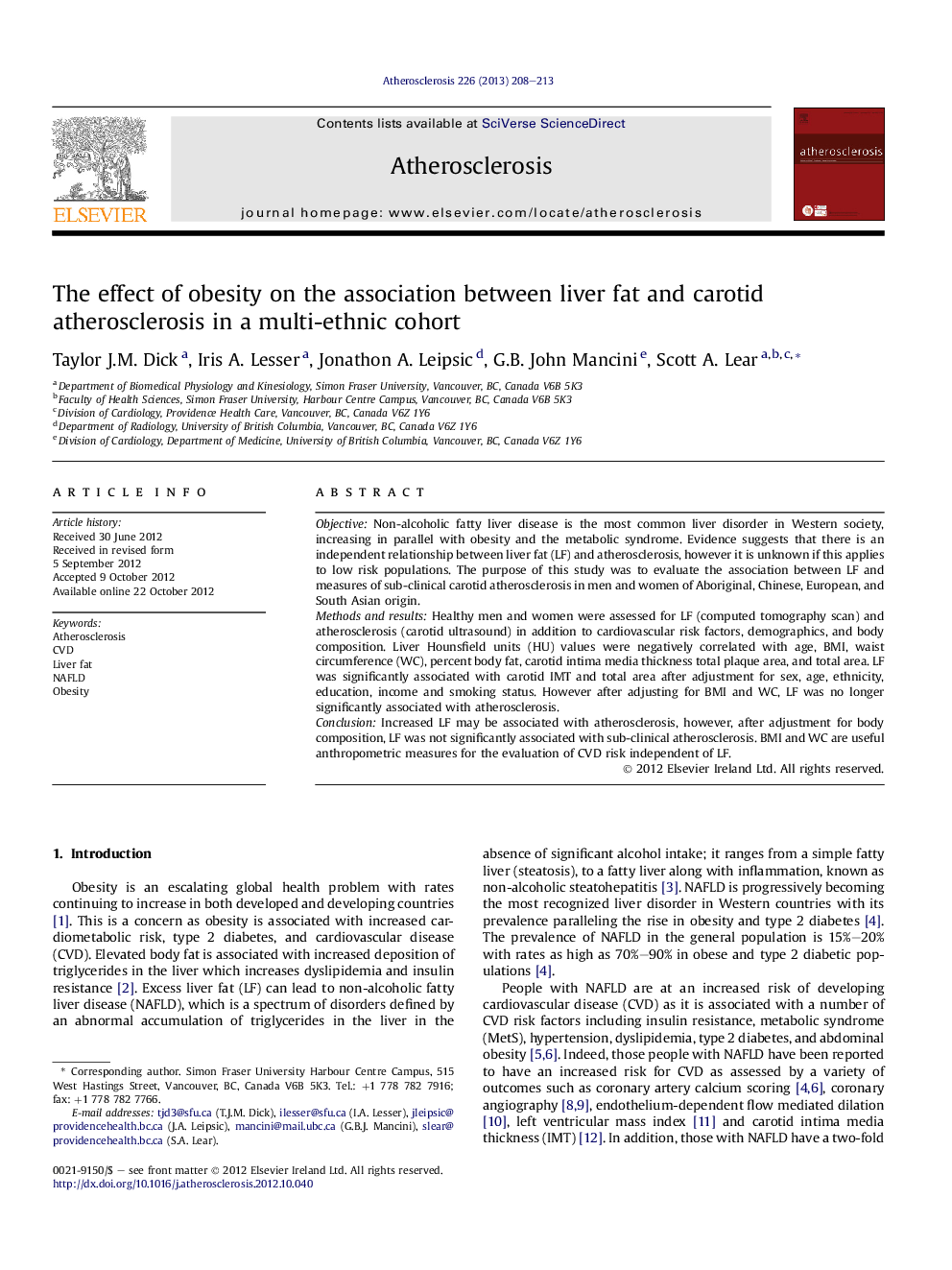| Article ID | Journal | Published Year | Pages | File Type |
|---|---|---|---|---|
| 5947994 | Atherosclerosis | 2013 | 6 Pages |
ObjectiveNon-alcoholic fatty liver disease is the most common liver disorder in Western society, increasing in parallel with obesity and the metabolic syndrome. Evidence suggests that there is an independent relationship between liver fat (LF) and atherosclerosis, however it is unknown if this applies to low risk populations. The purpose of this study was to evaluate the association between LF and measures of sub-clinical carotid atherosclerosis in men and women of Aboriginal, Chinese, European, and South Asian origin.Methods and resultsHealthy men and women were assessed for LF (computed tomography scan) and atherosclerosis (carotid ultrasound) in addition to cardiovascular risk factors, demographics, and body composition. Liver Hounsfield units (HU) values were negatively correlated with age, BMI, waist circumference (WC), percent body fat, carotid intima media thickness total plaque area, and total area. LF was significantly associated with carotid IMT and total area after adjustment for sex, age, ethnicity, education, income and smoking status. However after adjusting for BMI and WC, LF was no longer significantly associated with atherosclerosis.ConclusionIncreased LF may be associated with atherosclerosis, however, after adjustment for body composition, LF was not significantly associated with sub-clinical atherosclerosis. BMI and WC are useful anthropometric measures for the evaluation of CVD risk independent of LF.
⺠Increasing LF is associated with sub-clinical carotid atherosclerosis in a healthy population. ⺠The association between LF and carotid atherosclerosis was not independent of BMI or WC. ⺠Increasing LF does not elevate the risk for atherosclerosis beyond that identified by BMI or WC. ⺠BMI and WC have clinical value to identify those at early elevated CVD risk.
